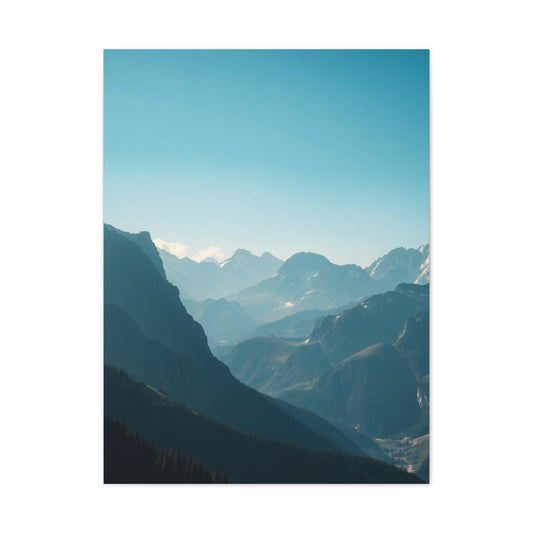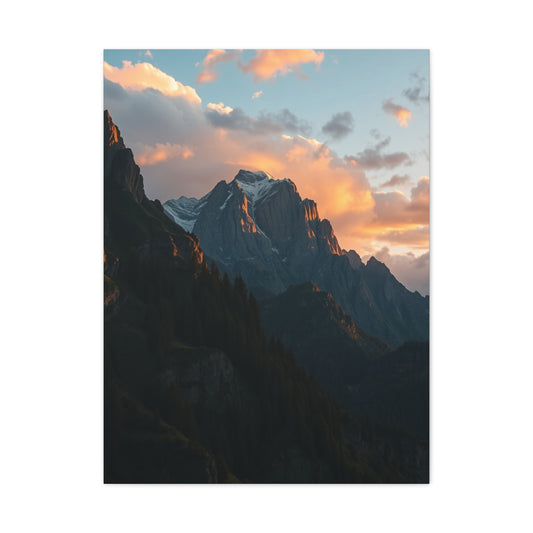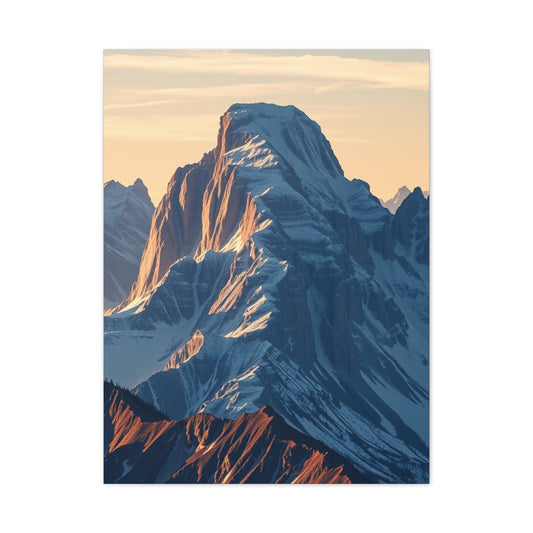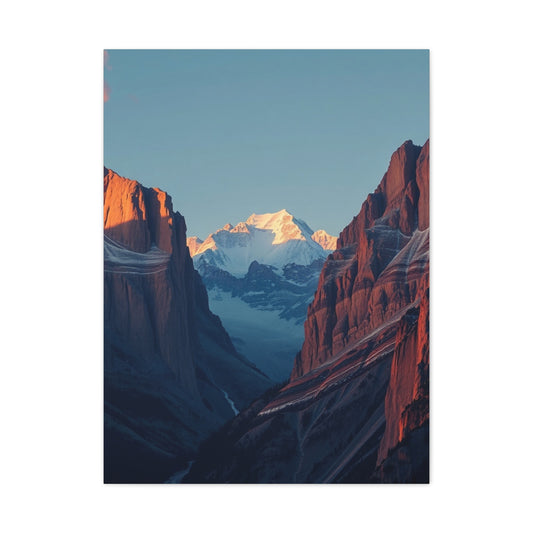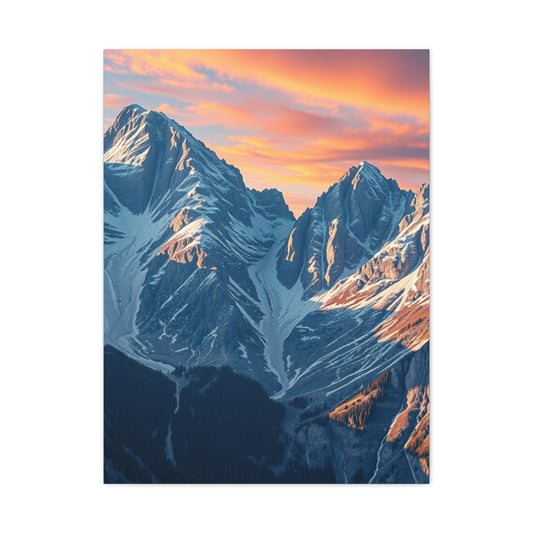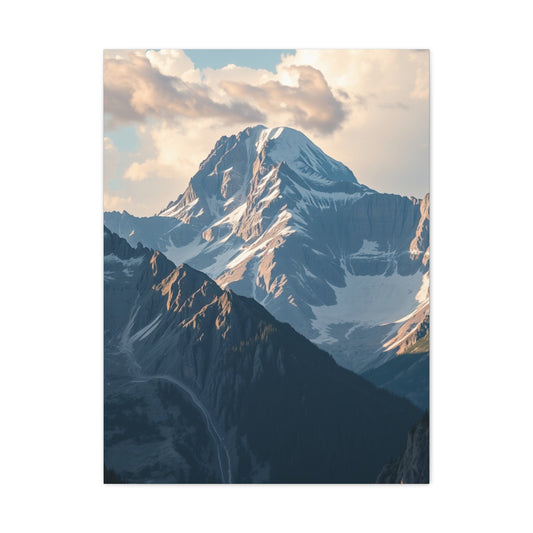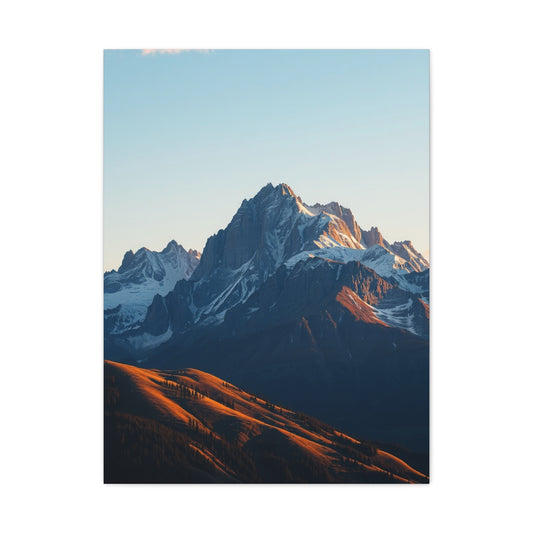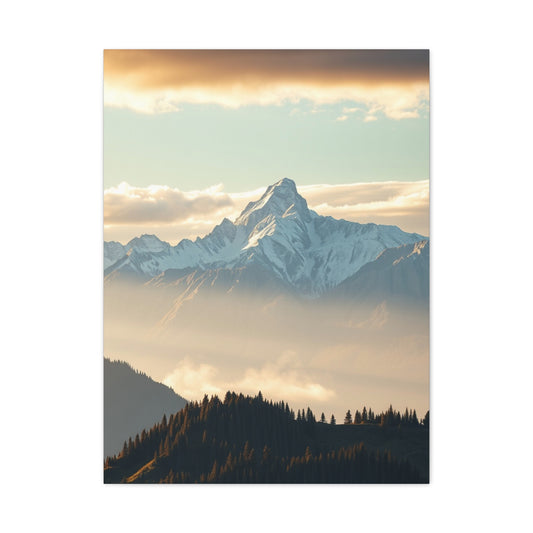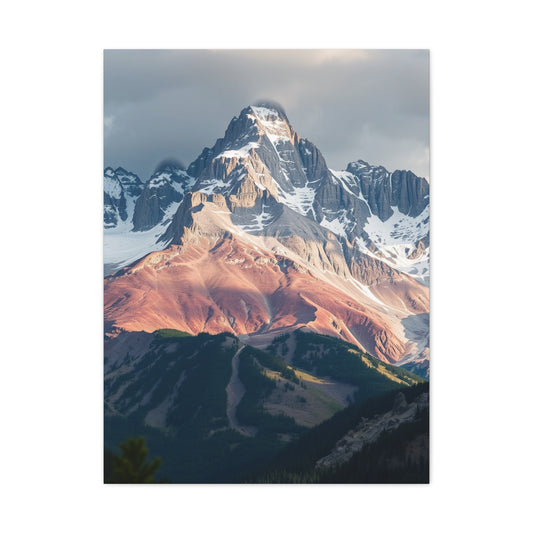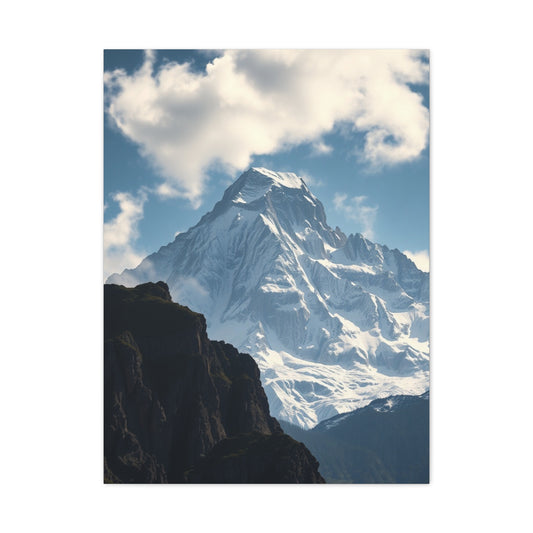-
Alpine Serenity Masterpiece Wall Art & Canvas Print
Regular price From $141.23 USDRegular priceUnit price per -
Ethereal Heights Collection Wall Art & Canvas Print
Regular price From $141.23 USDRegular priceUnit price per -
Summit Splendor Wall Art Wall Art & Canvas Print
Regular price From $141.23 USDRegular priceUnit price per -
Horizon Majesty Artistry Wall Art & Canvas Print
Regular price From $141.23 USDRegular priceUnit price per -
Pinnacle Elegance Canvas Wall Art & Canvas Print
Regular price From $141.23 USDRegular priceUnit price per -
Vistas of Grandeur Canvas Wall Art & Canvas Print
Regular price From $141.23 USDRegular priceUnit price per -
Sublime Summit Creations Wall Art & Canvas Print
Regular price From $141.23 USDRegular priceUnit price per -
Regal Crest Canvas Art Wall Art & Canvas Print
Regular price From $141.23 USDRegular priceUnit price per -
Celestial Range Portraiture Wall Art & Canvas Print
Regular price From $141.23 USDRegular priceUnit price per -
Majestic Peaks Tapestry Wall Art & Canvas Print
Regular price From $141.23 USDRegular priceUnit price per
10 Unique Mountain Wall Art Creations for a Serene Ambiance
Mountains have always held a magnetic presence in human imagination. Their sheer scale, unyielding permanence, and breathtaking beauty remind us of both the fragility and resilience of life. Bringing these majestic landscapes into the home through mountain wall art allows you to capture that awe-inspiring energy within your personal sanctuary. This form of décor is not simply about hanging an image on a wall; it is a way to recreate the serenity of alpine valleys, the drama of jagged summits, and the mystique of faraway wilderness. In a world where digital distractions often overwhelm, mountain art serves as a grounding element that reconnects us to something timeless and unspoiled.
The choice of mountain wall art has a transformative impact on interiors, influencing mood, ambience, and even the psychological sense of space. Large-scale depictions can open up a room, creating the illusion of vast horizons, while intimate mountain scenes bring calmness and reflection to quiet corners. Whether the preference leans toward abstract interpretations of snowy ridges or realistic photographs of iconic peaks, each piece serves as a portal to nature’s grandeur. This introduction of natural elements into interior spaces is not a passing design fad but an enduring approach to cultivating balance, comfort, and beauty at home.
Historical Background
The history of mountains in art stretches back to some of humanity’s earliest expressions. In prehistoric cave paintings, rough silhouettes of hills and valleys already hinted at the spiritual significance of elevated landscapes. Ancient civilizations viewed mountains as sacred, believing peaks to be the dwelling places of gods. In Greek mythology, Mount Olympus represented the seat of divine power, while in the Himalayas, countless legends spoke of summits as gateways to enlightenment. These early associations with transcendence deeply influenced artistic portrayals of mountains, embedding them into cultural memory.
During the Renaissance, mountains began to emerge more prominently in European paintings, though often in the background of religious or pastoral scenes. Artists like Leonardo da Vinci and Albrecht Dürer experimented with rendering natural forms with scientific precision, using the jagged silhouettes of alpine ranges to anchor their compositions. By the Romantic era, however, mountains took center stage. Painters such as Caspar David Friedrich captured sweeping vistas that stirred emotion, symbolizing both the sublime and the untamed forces of nature. Their works expressed humanity’s longing to merge with landscapes far greater than themselves, a sentiment that continues to inspire modern mountain wall art today.
In Asia, traditional ink paintings often featured mountains as metaphors for resilience and contemplation. Chinese shan shui art emphasized harmonious interactions between peaks, rivers, and mist, highlighting spiritual philosophies about balance and flow. Japanese artists, too, elevated mountains in their works, with Mount Fuji becoming an enduring icon of cultural identity. These stylistic traditions reveal the universality of mountain imagery, transcending cultural borders to represent something deeply human.
As photography emerged in the 19th century, mountains became one of its most captivating subjects. Explorers and adventurers carried bulky cameras into remote ranges, capturing images that revealed the sublime power of these landscapes to audiences who had never witnessed them in person. These photographs eventually influenced modern décor trends, paving the way for mountain wall art to become a household staple in both realist and abstract forms.
Core Concepts and Foundations
To fully appreciate mountain wall art, it is essential to understand the underlying principles that make these depictions so evocative. At its heart, this art form is about connecting the viewer with nature in ways that go beyond mere decoration. Mountains symbolize endurance, aspiration, and tranquility, qualities that resonate universally across cultures and lifestyles. When introduced into a living space, mountain imagery taps into deep-seated emotional responses, shaping not just the aesthetics of a room but the mindset of those within it.
One foundational concept is scale. Mountains are inherently monumental, and art that depicts them often conveys a sense of expansiveness. A panoramic canvas can visually enlarge a confined room, offering the impression of standing before an endless horizon. Conversely, smaller, detailed portrayals focus on the micro-beauty of alpine life—textures of rock, reflections in glacial lakes, or trees clinging to steep ridges—inviting contemplation rather than awe.
Another key foundation is atmosphere. The mood of mountain wall art is profoundly affected by the color palette and light. Cool blues and whites of snow-draped peaks evoke calm and stillness, while fiery reds and golds of sunset transform mountains into symbols of passion and vitality. Minimalist interpretations, often using monochrome or subdued tones, strip away distraction and highlight the structural essence of the landscape.
The orientation and placement of mountain art within a home are also integral. Hanging a large, dramatic piece above a fireplace creates a commanding focal point, while arranging smaller prints in a gallery wall tells a narrative of journeys, seasons, or personal connections. These choices blend personal taste with universal themes, ensuring the art does not merely decorate but transforms the surrounding environment into a reflective space.
Ultimately, mountain wall art rests on the principle of immersion. It draws the observer into a visual journey, whether that journey is one of adventure, serenity, nostalgia, or inspiration. This immersive quality is what distinguishes it from ordinary wall décor, elevating it into an experience that reshapes how one feels within a room.
Types and Categories
Mountain wall art encompasses a wide range of styles, each offering its own interpretation of these majestic landscapes. The diversity of options ensures that every individual can find a piece aligned with their personality, home design, and emotional needs.
Photographic art remains one of the most popular categories. High-resolution images capture the clarity of mountain peaks, from sunlit glaciers to shadowed ridges. Some focus on wide-angle panoramic views that immerse the viewer in grandeur, while others zoom into intimate details like frosted pine needles or rippling alpine streams. Black-and-white photography adds another dimension, emphasizing texture and structure without the influence of color.
Paintings, both traditional and contemporary, provide more interpretative expressions. Oil paintings might highlight dramatic contrasts of light and shadow across a snow-capped massif, while watercolor renderings create ethereal depictions of mist-shrouded valleys. Modern abstract paintings strip mountains down to geometric shapes and tonal gradients, ideal for interiors with a minimalist or avant-garde character.
Mixed-media art introduces experimental approaches, layering textures, wood, or metallic accents to replicate the tactile qualities of mountain terrain. These pieces often combine visual and physical depth, making them standout features in eclectic or rustic interiors.
Cultural and symbolic representations form another meaningful category. Art inspired by Asian traditions, for instance, conveys mountains not just as physical forms but as spiritual metaphors. Contemporary artists sometimes merge these philosophies with modern design, creating works that balance ancient symbolism with current aesthetic sensibilities.
Seasonal depictions also play a crucial role, with artists capturing mountains in their ever-changing attire. Spring blossoms at alpine meadows, golden autumn forests at the base of ridges, or stark winter silhouettes of snowbound summits allow homeowners to select imagery that resonates with their favorite time of year.
Adventure-inspired themes complete the spectrum, incorporating human presence within the grandeur of the peaks. Images of climbers on sheer faces, hikers on winding trails, or skiers carving paths through powder embody energy, movement, and aspiration. This category appeals particularly to those who view mountains as spaces for exploration rather than passive observation.
Each type and category of mountain wall art carries its own ability to transform a room. Choosing the right style becomes not just a question of decoration but of personal storytelling—what kind of relationship with the mountains you want reflected in your living space.
Techniques and Methods
The creation of mountain wall art involves a variety of techniques that shape how the subject is interpreted and experienced. Each method influences mood, depth, and authenticity, giving homeowners the ability to choose art that resonates with their unique vision. Whether rendered by hand, captured through a lens, or digitally composed, the process behind each piece is as significant as the finished work.
Photography remains one of the most celebrated approaches, with both traditional and modern methods shaping the genre. Long-exposure shots can transform moving clouds or cascading waterfalls around mountain peaks into silky, dreamlike textures. High dynamic range photography balances the brilliance of sunlight with the detail of shadowed valleys, ensuring no aspect of the landscape is lost. Panoramic techniques expand the frame beyond normal perception, allowing the viewer to stand within an enveloping horizon.
Painting methods vary across media. Oil paintings allow for layered richness and a sense of timeless grandeur, while acrylics provide vivid clarity and durability suitable for contemporary interiors. Watercolors capture translucence, with soft gradients of color reflecting morning mist or evening haze across mountain ridges. Many artists employ mixed techniques, blending ink sketches with washes of paint to emphasize both structure and atmosphere.
Digital art has broadened the scope dramatically. Graphic tablets enable creators to experiment with stylized designs, from minimalistic line work to intricate 3D renderings. These digital creations can then be printed on canvas, wood, or even metal, producing textures and finishes that align with diverse interior styles. Laser-cut silhouettes and geometric patterns represent another method, merging technology with artistic interpretation to craft modern wall décor rooted in mountain imagery.
Collage and mixed-media methods introduce tangible depth. Artists may combine natural materials like wood fragments, stones, or metallic leaf with painted or printed surfaces to evoke the tactile reality of mountain terrain. These handcrafted elements create artworks that engage multiple senses, bringing a raw, grounded character to a space.
Finally, framing and mounting techniques also play a role in how mountain wall art is perceived. Floating frames emphasize modernity, while rustic wooden frames mirror the organic essence of alpine landscapes. Large frameless prints evoke a gallery-like presence, inviting immersion without distraction. These finishing details form part of the artistic method, shaping how the art interacts with its environment.
Challenges and Common Mistakes
While the beauty of mountain wall art is undeniable, some challenges and pitfalls can diminish its impact if not approached thoughtfully. One of the most frequent mistakes is choosing art that conflicts with the scale of the room. Oversized prints can overwhelm a small space, making it feel cramped rather than expansive, while pieces that are too small may appear lost on a wide wall, diminishing their intended effect. The balance between art size and spatial proportion is essential.
Another challenge lies in color harmony. A vibrant depiction of a crimson sunset over snowy peaks may clash with muted interiors, creating visual dissonance. Conversely, overly subdued tones can fade into the background, losing their ability to inspire. Selecting mountain art requires consideration of both the artwork’s palette and the room’s existing color scheme to ensure cohesion.
Placement mistakes are also common. Hanging art too high or too low distorts the natural line of sight and prevents the viewer from fully engaging with the image. Gallery walls can become cluttered if arranged without rhythm or spacing, while statement pieces lose impact if surrounded by competing visual noise. Proper placement requires thoughtfulness, ensuring that the art integrates seamlessly into its surroundings.
For creators, a challenge lies in balancing realism with interpretation. Hyper-realistic depictions risk becoming static if they lack atmosphere, while overly abstract renderings may lose the recognizable essence of mountains altogether. The artistry lies in finding equilibrium—capturing the spirit of the peaks while leaving space for imagination.
Another frequent misstep is overlooking material quality. Low-resolution prints, poorly stretched canvases, or flimsy frames undermine the artwork’s longevity and presence. Investing in durable materials not only enhances aesthetic appeal but also ensures the art continues to inspire for years to come.
Finally, one subtle challenge is emotional connection. Selecting mountain wall art solely for style, without considering its resonance, can result in décor that feels impersonal. Art thrives when it reflects memory, aspiration, or emotion—whether it recalls a cherished journey to alpine trails or symbolizes a longing for peace and adventure. Without this personal connection, even the most technically stunning piece may feel hollow.
Trends and Future Outlook
The evolution of mountain wall art continues to adapt to cultural shifts, technological innovation, and the growing desire to bring elements of nature indoors. Current trends lean toward personalization and sustainability, reflecting broader movements in design and lifestyle.
One significant trend is the rise of large-scale immersive pieces. Homeowners increasingly seek art that transforms an entire wall, enveloping the viewer in a sense of place. Oversized photographic prints, wall-length murals, and even projection-based art create environments where mountains become more than imagery—they become spatial experiences.
Minimalist and abstract interpretations are also gaining prominence. Clean line drawings of ridges, stylized geometric depictions, and muted tonal palettes align with the popularity of Scandinavian and modern design. These artworks prioritize form and essence over detail, offering subtle elegance that complements contemporary interiors.
Another emerging direction is multi-sensory art. Innovations in printing technology allow for textured finishes that mimic the roughness of rock or the softness of snow. Some creators experiment with backlighting techniques, integrating LED panels behind translucent images to simulate dawn or dusk across the peaks. These interactive approaches expand mountain wall art beyond visual aesthetics, creating atmospheres infused with light and dimension.
Eco-conscious practices are reshaping the future as well. Artists and manufacturers are turning to sustainable materials, using recycled wood for frames, plant-based inks, and responsibly sourced canvases. This shift aligns with the ethos of mountain imagery itself, which often symbolizes respect for nature and ecological balance.
Cultural fusion is another growing influence. Artists merge traditional motifs from indigenous mountain cultures with contemporary styles, producing pieces that honor heritage while appealing to modern tastes. This blending of past and present expands the narrative potential of mountain art, making it both globally relevant and deeply personal.
Looking ahead, digital technology will continue to transform the field. Augmented reality could allow viewers to preview how a piece of mountain wall art would look in their space before purchase, while virtual galleries may enable immersive exploration of alpine-inspired works from around the world. The boundary between physical and digital will blur, expanding access and creative possibilities.
Ultimately, the future outlook suggests that mountain wall art will remain a timeless choice, continually reimagined to suit evolving aesthetic preferences and technologies. Its enduring appeal lies in its ability to merge the permanence of nature with the fluidity of human creativity.
Expert Insights
Artists, designers, and collectors provide invaluable perspectives that enrich our understanding of mountain wall art. Their insights reveal not only technical considerations but also the deeper meanings and intentions behind these creations.
Many photographers emphasize patience as the most critical skill. Capturing mountains at their most compelling moments requires waiting for the precise alignment of light, weather, and perspective. Dawn and dusk, with their shifting hues and long shadows, are favored times, yet they also demand resilience against harsh conditions. This discipline reflects the very character of the mountains themselves—demanding yet rewarding.
Painters often describe mountains as both muse and challenge. Rendering their monumental presence requires balancing detail with atmosphere. Some artists focus on the geology of ridges and strata, while others seek to express the spiritual resonance of peaks veiled in mist. These contrasting approaches highlight the versatility of mountains as subjects, capable of embodying both scientific observation and poetic expression.
Interior designers stress the importance of intention when incorporating mountain wall art into a home. They recommend considering the role the piece will play—whether as a focal point, a subtle complement, or a thematic anchor. Designers also advise aligning the artwork with natural light sources, allowing sunlight to animate the piece throughout the day, echoing the shifting moods of real landscapes.
Collectors share that their most treasured works are those that evoke personal connection. A photograph from a memorable hike, a painting of a distant dream destination, or an abstract rendering that reflects inner emotions often carries more value than any well-known peak. For them, mountain art is not merely decorative but a repository of memory, identity, and aspiration.
Art historians add that mountains have consistently symbolized transcendence in art across centuries. From sacred depictions in ancient traditions to Romantic masterpieces and contemporary designs, their persistent presence reflects humanity’s enduring dialogue with nature. For experts, the continued popularity of mountain wall art is less about trend and more about timeless resonance, speaking to universal yearnings that surpass cultural and generational divides.
In conclusion, expert perspectives affirm that mountain wall art is more than a visual accessory. It is a creative expression of humanity’s relationship with the natural world, shaped by patience, vision, and personal meaning. By listening to the voices of those who create, curate, and live with such art, we deepen our appreciation for its enduring capacity to transform both spaces and spirits.
Emerging Trends in Wall Art
Wall art has always been a mirror of cultural evolution, reflecting shifts in taste, lifestyle, and technology. In recent years, it has moved far beyond simple decoration, becoming an essential component of how people design their spaces to communicate identity, values, and emotional resonance. Emerging trends demonstrate that art is no longer confined to galleries; it lives on living room walls, in office spaces, and even within digital screens that merge the physical with the virtual.
One prominent trend is the emphasis on immersive experiences. Oversized canvases and wall-spanning murals transform entire rooms into extensions of natural or abstract worlds. When a panoramic depiction of alpine peaks stretches from corner to corner, it creates the sensation of standing inside the landscape rather than viewing it from afar. This immersive quality is increasingly sought after by homeowners who wish to dissolve the boundaries between inside and outside, transforming static interiors into dynamic environments.
Sustainability is also reshaping the art world. As awareness of environmental concerns grows, many creators are choosing eco-friendly materials. Recycled wood, plant-based pigments, and biodegradable canvas options are becoming common, ensuring that beauty and conscience coexist. This trend is particularly significant in art inspired by natural landscapes, as it aligns the symbolism of the subject matter with ethical practice.
Another important shift lies in personalization. Custom wall art allows individuals to bring their own narratives to life. Some commission bespoke paintings or order prints of meaningful photographs, while others collaborate with artists to reinterpret favorite places through unique lenses. This personalization trend reflects a deeper yearning for authenticity in an era of mass production, allowing art to embody not just universal themes but personal stories.
Technology is also revolutionizing wall art. Digital installations and augmented reality have opened new possibilities, enabling interactive pieces that respond to light, sound, or even viewer movement. Projection art can turn blank walls into shifting panoramas, while augmented reality apps allow individuals to preview different works within their homes before making decisions. These innovations expand creativity, blurring lines between traditional craftsmanship and digital dynamism.
Minimalist aesthetics continue to rise in popularity, with clean lines, subdued palettes, and understated compositions dominating modern interiors. Simplicity does not equate to dullness; rather, it emphasizes balance and intentionality. Geometric depictions of mountains, for example, strip away complexity while retaining the essence of grandeur, aligning perfectly with contemporary design philosophies.
Finally, global fusion is enriching the wall art landscape. Artists borrow motifs, techniques, and symbolism from multiple traditions, creating hybrid works that celebrate diversity. Indigenous representations of mountains, Asian philosophies of harmony, and Western notions of the sublime often merge in contemporary pieces, offering viewers a tapestry of perspectives in a single image. This multicultural infusion makes wall art not only decorative but also educational and narrative, inviting reflection on interconnected heritage.
These emerging trends reveal a vibrant, evolving field where creativity adapts to social values, technological advancement, and personal expression. They demonstrate that wall art is not static décor but a living, responsive medium that will continue to reinvent itself in years to come.
Step-by-Step Guides
Understanding how to select, arrange, and integrate wall art can be transformative for both homes and workplaces. The following step-by-step guides provide practical direction while leaving space for creativity and individual interpretation.
Step 1: Define Your Intention
Before choosing art, clarify what you want it to achieve. Are you seeking to create calmness, to energize a space, or to showcase personality? Art thrives when chosen with intention. For example, panoramic mountain landscapes may introduce a sense of vastness and serenity in a living room, while dynamic, colorful abstract pieces may enliven a workspace. Anchoring your choice in intention prevents random selections that feel disjointed later.
Step 2: Evaluate Space and Scale
Art must harmonize with its surroundings. Begin by examining wall dimensions, ceiling height, and existing furnishings. A large wall over a sofa may demand a bold centerpiece, while narrow hallways may be better suited to elongated or vertically oriented works. Balance is critical: art that is too large overwhelms, while art that is too small appears insignificant. Aim for proportion, allowing the piece to command presence without suffocating the room.
Step 3: Select the Medium
Choose between photography, painting, mixed media, or digital formats based on the ambience you want to establish. Photographic prints often carry realism and clarity, ideal for grounding a room with natural authenticity. Paintings, whether oil or watercolor, allow for more interpretive and emotional resonance. Mixed media and textured art bring tactile depth, while digital works introduce innovation and interactivity. Matching the medium to your vision ensures consistency of tone.
Step 4: Consider Color Harmony
The palette of wall art should converse with the room’s existing colors. Complementary hues create cohesion, while contrasting tones introduce drama. A snow-clad mountain in cool blues and whites might enhance a minimalist bedroom, while fiery sunset art adds warmth to rustic interiors. Pay attention not only to dominant colors but also to subtler undertones, as these influence the artwork’s ability to blend seamlessly.
Step 5: Plan Placement Thoughtfully
Art placement defines how it is perceived. Position works at eye level for natural engagement, ensuring they align with furniture dimensions. A piece above a fireplace should not dwarf the mantle, nor should a print above a bed appear awkwardly small. Gallery walls require rhythm: mix sizes but maintain spacing to avoid clutter. When arranging multiple pieces, experiment with layouts on the floor before committing to nails or hooks.
Step 6: Frame with Purpose
Framing is not merely protective but aesthetic. Choose rustic wood for a natural, organic atmosphere, sleek metal for modern elegance, or frameless canvases for a gallery-style presence. Frames should enhance the art, not distract from it, creating unity between artwork and environment. Even subtle changes in frame thickness or texture can dramatically alter how a piece integrates with décor.
Step 7: Introduce Lighting
Proper lighting enhances wall art’s impact. Direct spotlights can highlight focal pieces, while ambient lighting reveals subtle tones and textures. Natural light is invaluable, though care must be taken to prevent fading in delicate works. In modern interiors, backlit art panels or LED accents add dramatic flair, allowing artworks to shift character as daylight changes.
Step 8: Layer with Other Elements
Wall art rarely stands alone. Complement it with surrounding textures, furnishings, and accents. A mountain print may resonate beautifully when paired with natural wood furniture or woven textiles, creating thematic consistency. Abstract works, on the other hand, might benefit from modern décor elements like glass, steel, or monochromatic tones. This layering fosters holistic design rather than isolated decoration.
Step 9: Personalize Your Selection
Art becomes meaningful when it reflects personal identity. Choose pieces connected to memories, aspirations, or passions. A photograph of a mountain once climbed, a commissioned abstract reflecting your favorite colors, or even a gallery wall of travel moments ensures your décor is not generic but deeply personal. This personalization transforms spaces into stories.
Step 10: Evolve with Time
Art is not static. Allow your collection to evolve as your tastes and experiences change. Rotate works seasonally, experiment with new arrangements, or introduce emerging styles to keep interiors fresh. This ongoing dialogue with your wall art prevents stagnation and ensures spaces continually inspire.
Artistic Interpretations Across Cultures
The interpretation of mountains in art is as diverse as the cultures that revere them. Each society projects its philosophy, spirituality, and values into depictions of peaks and valleys, creating a mosaic of meaning that extends far beyond aesthetics.
In East Asia, mountains symbolize harmony, endurance, and enlightenment. Traditional Chinese ink landscapes, known as shan shui, emphasize the interplay of peaks, rivers, and mist. These works rarely attempt photographic realism; instead, they seek a balance between natural elements and spiritual ideals, portraying mountains as metaphors for stability and continuity. Japanese depictions of Mount Fuji reflect both reverence and national identity, capturing its snow-capped summit as a symbol of perseverance and serenity.
In the West, particularly during the Romantic period, mountains embodied the sublime—nature’s ability to evoke awe and even fear through sheer scale. Artists like Caspar David Friedrich painted solitary figures dwarfed by monumental ranges, highlighting humanity’s smallness against vast wilderness. These images spoke of exploration, longing, and humility, themes still echoed in contemporary mountain-inspired wall art.
Indigenous cultures interpret mountains as sacred guardians. For the Inca, peaks represented deities and protectors of life, while Native American traditions often regarded mountains as bridges between the earthly and the spiritual. Contemporary artists influenced by these traditions incorporate symbolic motifs, ensuring that the heritage of mountain reverence continues to inspire modern interiors.
This cultural diversity enriches the field of wall art, offering works that are not only visually captivating but layered with historical and philosophical significance. Each interpretation allows homeowners to bring more than a landscape into their space—it allows them to integrate centuries of human wisdom and reverence.
Psychological and Emotional Influence
The impact of mountain imagery extends beyond visual appeal. Studies in environmental psychology reveal that art depicting natural scenes can reduce stress, enhance creativity, and foster relaxation. Mountain landscapes, in particular, offer a unique psychological resonance, combining stability with transcendence.
The verticality of peaks inspires feelings of aspiration and ambition. Just as climbers view summits as goals to conquer, viewers subconsciously associate mountain art with personal growth and achievement. A snow-draped massif displayed in an office, for instance, can serve as a daily reminder of perseverance and long-term vision.
At the same time, valleys, lakes, and forests depicted alongside mountains evoke calm and reassurance. These elements counterbalance the grandeur of peaks, offering a sense of restfulness. Bedrooms adorned with gentle alpine scenes often feel like sanctuaries of quiet retreat, while living rooms with bold ridges provide energy and conversation starters.
The psychological benefits also stem from the biophilic principle—the innate human affinity for nature. Incorporating mountain-inspired imagery into interiors reconnects individuals with primal instincts, grounding them in an increasingly digitized world. This connection is not superficial but deeply restorative, influencing mood and even physiological responses such as heart rate and breathing rhythm.
In essence, mountain wall art does not merely decorate a room. It actively participates in shaping atmosphere and emotional state, infusing spaces with qualities of strength, serenity, and inspiration.
Integrating Art Into Modern Interiors
One of the greatest strengths of wall art is its adaptability across interior styles. Whether a home embraces rustic warmth, sleek minimalism, or eclectic creativity, mountain imagery can be tailored to complement and enhance the existing design.
In rustic settings, large canvases of snow-capped ranges resonate beautifully with wood, stone, and earthy tones. The art amplifies the sense of being close to nature, reinforcing the organic textures of the environment.
Minimalist interiors benefit from pared-down depictions. Clean line drawings of ridges, monochrome photographs, or abstract silhouettes bring elegance without overwhelming simplicity. The subtle geometry of mountain forms aligns effortlessly with the clarity of Scandinavian or Japanese-inspired décor.
Modern eclectic spaces thrive on contrast and fusion. Here, bold, colorful interpretations—perhaps a stylized sunset across alpine peaks or a geometric reimagining of valleys—add vibrancy and intrigue. Layered with diverse furnishings, such art contributes to an atmosphere of creativity and individuality.
Corporate and professional environments also embrace mountain art for its motivational undertones. Panoramic prints in meeting rooms or hallways can project strength and aspiration, aligning with organizational values of growth and ambition.
Ultimately, integration is about intentional harmony. The choice of art, its size, frame, and placement must converse with the broader design narrative, ensuring cohesion rather than discord. When thoughtfully selected, mountain imagery becomes not just an accessory but a defining element of the space.
Curating Collections and Storytelling
For many, the appeal of wall art lies not in single pieces but in curated collections that tell a story. A gallery wall of mountain scenes, arranged with rhythm and purpose, can transform a blank surface into a narrative tapestry.
Curation begins with a theme. A collection might focus on seasons, with prints showing spring meadows, summer ridges, autumn forests, and winter peaks. Another approach might highlight different artistic methods, juxtaposing a black-and-white photograph with a colorful watercolor and a minimalist line sketch. This variety introduces depth and prevents monotony.
Balance is essential. Mixing sizes and orientations creates dynamism, but spacing must be deliberate to avoid visual chaos. Frames should unify the collection, whether through consistent material or harmonious contrast. The arrangement should flow naturally, guiding the eye across the wall in a way that feels organic rather than forced.
Collections also allow for personal storytelling. A traveler might curate prints from peaks they have visited, while a dreamer might assemble images of mountains yet to be explored. In this way, art becomes an evolving biography, reflecting both memory and aspiration.
Through thoughtful curation, a collection of mountain wall art transcends decoration, becoming a visual chronicle of journeys, emotions, and identities.
Conclusion
The enduring allure of mountain wall art lies in its ability to merge natural majesty with human imagination. From ancient ink scrolls to contemporary digital renderings, depictions of peaks and valleys have carried profound meaning across cultures and centuries. They symbolize aspiration, resilience, and harmony, while also offering tangible psychological benefits within daily environments.
For homeowners and designers alike, the choice to incorporate mountain imagery is more than an aesthetic decision. It is an invitation to bring tranquility, strength, and inspiration into lived spaces. Techniques and methods vary—photography, painting, mixed media, digital innovation—yet each carries the same essence: a connection to landscapes that remind us of the vast and eternal.
Challenges remain, whether in balancing scale, ensuring color harmony, or avoiding impersonal choices. Yet with thoughtful intention, these challenges transform into opportunities for creativity. Emerging trends continue to expand possibilities, from sustainable practices to immersive technologies, ensuring that mountain art evolves alongside cultural and environmental shifts.
Expert voices affirm what intuition already knows: mountain imagery is timeless. It resonates not because of fleeting fashion but because it echoes something deep within the human spirit. As new generations seek connection in a world of rapid change, these landscapes remain constants—anchors of beauty, strength, and wonder.
In conclusion, mountain wall art is more than décor. It is a testament to humanity’s enduring dialogue with nature, a reflection of aspirations that reach as high as the peaks themselves. To bring such art into your space is to embrace both stillness and movement, permanence and transformation, memory and dream. It transforms walls into windows, reminding us daily of the grandeur that lies beyond and within.

